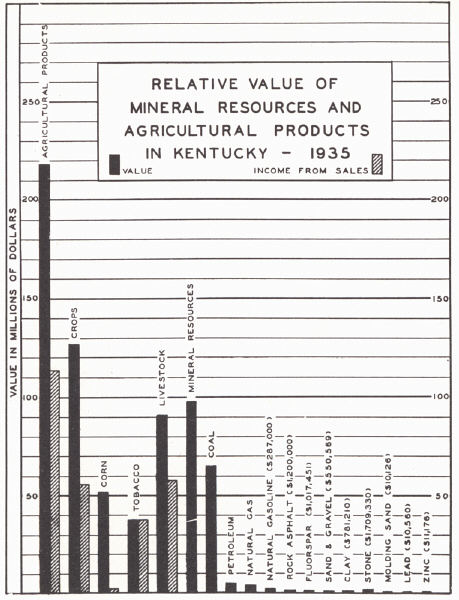

products in Kentucky, 1929
products in Kentucky, 1935
The mineral resources of any region are determined by the kind of rock and the geological processes which have been active in that region in the past. As a result, the mineral resources of one region will not be the same as those of another. Certain kinds may be reasonably expected; others it is unreasonable to expect. In Kentucky the kinds of mineral wealth to be anticipated are those resulting from the processes forming and later destroying sedimentary rocks. Intrusive igneous activity has been limited so that resulting mineral veins are restricted in extent. The fluorspar veins of Caldwell, Crittenden, and Livingston counties are the result of intrusive vulcanism as are also, presumably, the few mineral veins of central Kentucky.
A discussion of mineral resources commonly drifts into the error of assuming a value equal to the quantity available multiplied by the price at which that product is being marketed—this irrespective of the capacity and availability of the market. Thus limestone has a commercial value but the available supply in the state for all purposes far exceeds the market for it; similarly for some others. Kentucky has her share of commercial minerals and rocks; has more than some states and less than others. Coal, petroleum, and natural gas are outstanding. Fluorspar, clay, and rock asphalt are important. Limestone is abundant and has many uses. Sandstone and sand are of some importance. Mineral waters were at one time a real resource but are less so now. In addition, there is a long list of minerals and rocks of limited value or quantity. Oil shale is a potential resource awaiting the need for development.
| PLATE LXXI | |
 |
 |
| FIG. 1. Relative value of
mineral resources and agricultural products in Kentucky, 1929 |
FIG. 2. Relative value of
mineral resources and agricultural products in Kentucky, 1935 |